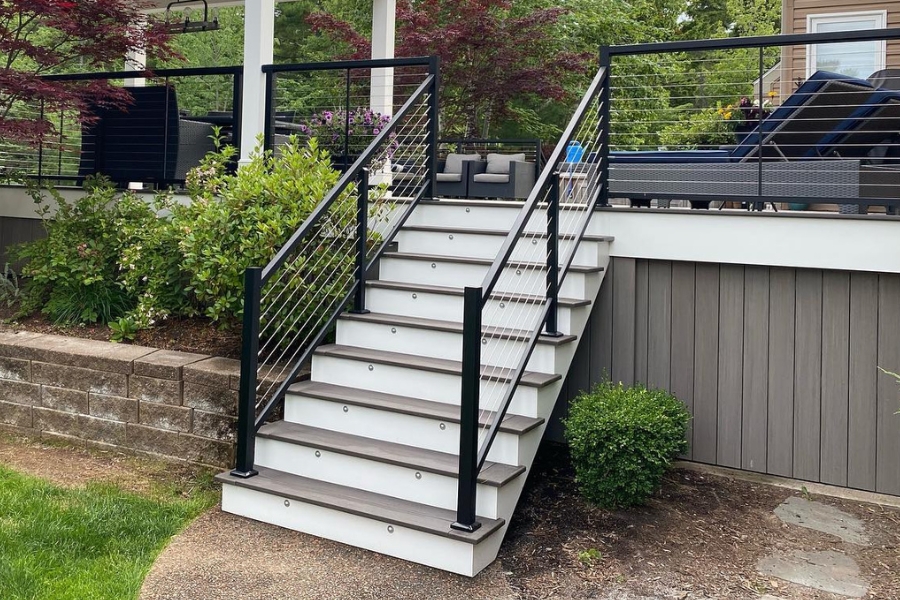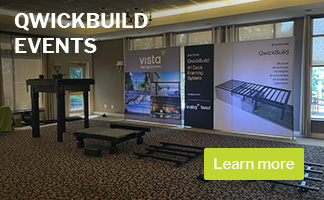How Cable Tension Affects a Railing’s Structural Integrity
Cable Railings | August 25, 2025

When it comes to designing and installing cable railing systems, aesthetics and visibility are often top of mind; however, there is one crucial factor that plays a key role in both the performance and longevity of the railing’s cable tension. Improper cable tension can compromise safety, lead to structural issues, and even result in building code violations. At Vista Railings, we have seen how incorrect tensioning can lead to structural issues and even failed inspections. That is why we have put together this guide to help you understand how cable tension affects a railing’s structural integrity.
Learn about some of the most common mistakes to avoid when installing cable railings.
How Does Cable Tension Impact Structural Integrity?
Understanding the role of cable tension can help ensure a strong, safe, and code compliant railing system. Below are the main considerations that highlight its importance:
The Role of Tension in Stability and Safety
One of the primary functions of cable tension is to provide horizontal support between posts, preventing deflection or sagging. If the tension is too loose, cables may become slack over time, creating a safety hazard. On the other hand, over-tensioned cables can exert excessive force on the posts and end fittings, which could cause structural damage or failure, especially over long runs. Knowing how to tension a cable railing correctly balances strength and flexibility, making the system safe and compliant with building codes.
Code Compliance and Cable Deflection
Building codes throughout Canada and the US require that railing infill, whether cable, glass, or pickets, must not allow a 4-inch sphere to pass through at any point. In cable railing systems, this means the cables must be tensioned enough to prevent excessive movement or spreading under pressure. Understanding these code requirements is something you should know before installing cable railings to avoid setbacks and to ensure a smooth process.
Long-Term Performance and Environmental Factors
Environmental changes like temperature fluctuations, humidity, and seasonal expansion or contraction can all affect cable tension over time. For example, stainless steel cables can slightly expand in extreme heat or contract in colder temperatures, which may loosen tension over the years.
Importance of Professional Installation
Ensuring the right amount of tension is not just about pulling cables tight; it requires accurate measurements, the correct tensioning tools, and an understanding of load distribution across posts. Professional installation is essential for avoiding common mistakes such as over-tensioning or using incompatible hardware.
At Vista Railings, we offer high-quality aluminum cable railing systems designed with performance and durability in mind. Get in touch with us to learn more about our cable railing solutions and to get expert advice on how to install them correctly.

When it comes to designing and installing cable railing systems, aesthetics and visibility are often top of mind; however, there is one crucial factor that plays a key role in both the performance and longevity of the railing’s cable tension. Improper cable tension can compromise safety, lead to structural issues, and even result in building code violations. At Vista Railings, we have seen how incorrect tensioning can lead to structural issues and even failed inspections. That is why we have put together this guide to help you understand how cable tension affects a railing’s structural integrity.
Learn about some of the most common mistakes to avoid when installing cable railings.
How Does Cable Tension Impact Structural Integrity?
Understanding the role of cable tension can help ensure a strong, safe, and code compliant railing system. Below are the main considerations that highlight its importance:
The Role of Tension in Stability and Safety
One of the primary functions of cable tension is to provide horizontal support between posts, preventing deflection or sagging. If the tension is too loose, cables may become slack over time, creating a safety hazard. On the other hand, over-tensioned cables can exert excessive force on the posts and end fittings, which could cause structural damage or failure, especially over long runs. Knowing how to tension a cable railing correctly balances strength and flexibility, making the system safe and compliant with building codes.
Code Compliance and Cable Deflection
Building codes throughout Canada and the US require that railing infill, whether cable, glass, or pickets, must not allow a 4-inch sphere to pass through at any point. In cable railing systems, this means the cables must be tensioned enough to prevent excessive movement or spreading under pressure. Understanding these code requirements is something you should know before installing cable railings to avoid setbacks and to ensure a smooth process.
Long-Term Performance and Environmental Factors
Environmental changes like temperature fluctuations, humidity, and seasonal expansion or contraction can all affect cable tension over time. For example, stainless steel cables can slightly expand in extreme heat or contract in colder temperatures, which may loosen tension over the years.
Importance of Professional Installation
Ensuring the right amount of tension is not just about pulling cables tight; it requires accurate measurements, the correct tensioning tools, and an understanding of load distribution across posts. Professional installation is essential for avoiding common mistakes such as over-tensioning or using incompatible hardware.
At Vista Railings, we offer high-quality aluminum cable railing systems designed with performance and durability in mind. Get in touch with us to learn more about our cable railing solutions and to get expert advice on how to install them correctly.













